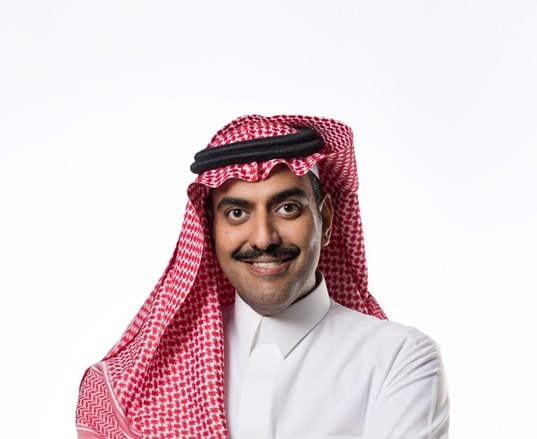“Inspired by the past, striving for more”

Saudis are celebrating their country’s 93rd National Day, following the declaration of the unification of Saudi Arabia by the unifier King Abdulaziz, who spent some three decades after he entered Riyadh in 1902 restoring the ancient glory of his ancestors until the great unification project was completed in 1932.
When reading the history of Saudi Arabia, attention is drawn to many points, but I believe that all of them lead to a main theme, which is the reconstruction of the land with the help of its people — and that reconstruction is rooted in its people wherever they go. In his book “Al-Tabaqat,” Ibn Saad relates that Talq ibn Ali Al-Hanafi went to Prophet Muhammad while he was building his mosque with his companions. Talq was an expert in treating and mixing clay, so he took the shovel and mixed the clay. The Prophet looked at him and said: “This Hanafi is an expert in clay ... Bring the Yamami close to the clay, for he is the best of you to hold (the clay) and has the strongest shoulders.”
Let us talk about Wadi Hanifah because of its connection to the historical events that constituted a milestone in our modern national history. The title of this milestone is security, peace and education, all of which lead to one result: the reconstruction of the land. When Ubaid bin Tha’labah, one of the kings of Al-Yamamah, came and chose Hajr to be a base, it grew and formed a great civilized habitat in the valley. And Thumamah ibn Athal took advantage of the growing agricultural wealth to make it a means of peace in the Arabian Peninsula with his famous saying: “No, by God, not a grain of wheat will come to you from Al-Yamamah until the Messenger of God, peace be upon him, gives his permission.”
All of these historical events continued in the pre- and post-Islamic period, passing through the events recorded in local history sources in the middle of the 15th century, when Prince Mani’ Al-Muraydi founded Diriyah and chose the impregnable strategic location in Wadi Hanifah and the agricultural Al-Mulaibeed. Then, Diriyah became a stop on the Hajj routes, providing pilgrims from the eastern Arabian Peninsula with all their requirements, including the presence of a strong political authority capable of protecting the passing caravans and providing pilgrims with water and food.
The beginning of the 18th century was a historical milestone in establishing the concept of the state, with the establishment of the First Saudi State. This was a major turning point in the history of the Arabian Peninsula, which had not known unity from the Arabian Gulf to the Red Sea and from north to south for 10 centuries. This project — which was initiated by Imam Mohammed bin Saud, the fourth grandfather of King Abdulaziz, from Diriyah — strengthened the concept of national unity and laid solid foundations and great principles stemming from a vision of reconstructing the land.
Today’s architectural examples stand as evidence of this, including the palaces of Ghasibah and At-Turaif district, overlooking Wadi Hanifah. These principles remained rooted in the Saudi royal family and the dream of unity remained a goal that King Abdulaziz placed among his priorities. He witnessed the end of the Second Saudi State, but he did not accept that. Rather, he carried the burden — as Turki bin Abdullah had carried before, when he established the Second Saudi State — and unified the peninsula again, returning it to the forefront and reconstructing the land.
Even after the unification of Saudi Arabia, we find the reconstruction of the land in every corner, starting from Al-Murabba. King Abdulaziz chose the area located outside the walls of Riyadh on the northern side, which was called Abu Rafi’, to build the complex. It had two floors and a balcony and was in the form of a square (murabba), which is how it earned its name. The building was famous for its high clay walls and the royal hall or the reception hall. Amin Al-Rihani related the story of two verses of a poem that was written on one of the walls of the reception hall: “Even if our ancestors were noble, we do not rely on genealogy. We build as our ancestors built and we do more than what they did.”
King Abdulaziz had ordered the chief builder who wrote the two verses to replace the original words in the verse “as they did” with “more than what they did.” This indicates King Abdulaziz’s determination to build more splendor in the region. His order to replace that phrase indicated his determination to build a glorious state that exceeded that of his ancestors.
This change in the expression ordered by King Abdulaziz was not merely the replacement of a few words. Rather, it was an advanced state of awareness on his part that prompted him not to accept the verse, which reflected the wisdom, originality and belonging of his ancestors. The king realized with great awareness that repetition is not a legitimate project for founding a state, but rather a project for imitation, and this contradicted what he aspired to, despite his appreciation of the glory that his ancestors had created. He did not want to match the glory of the past, but rather to surpass and exceed it.
From that past to the current situation, and today’s Saudi Vision 2030 is a series of dreams. We will work hard to make them a reality, until “more than what they did” is achieved.
Dr. Badran Al-Honaihen